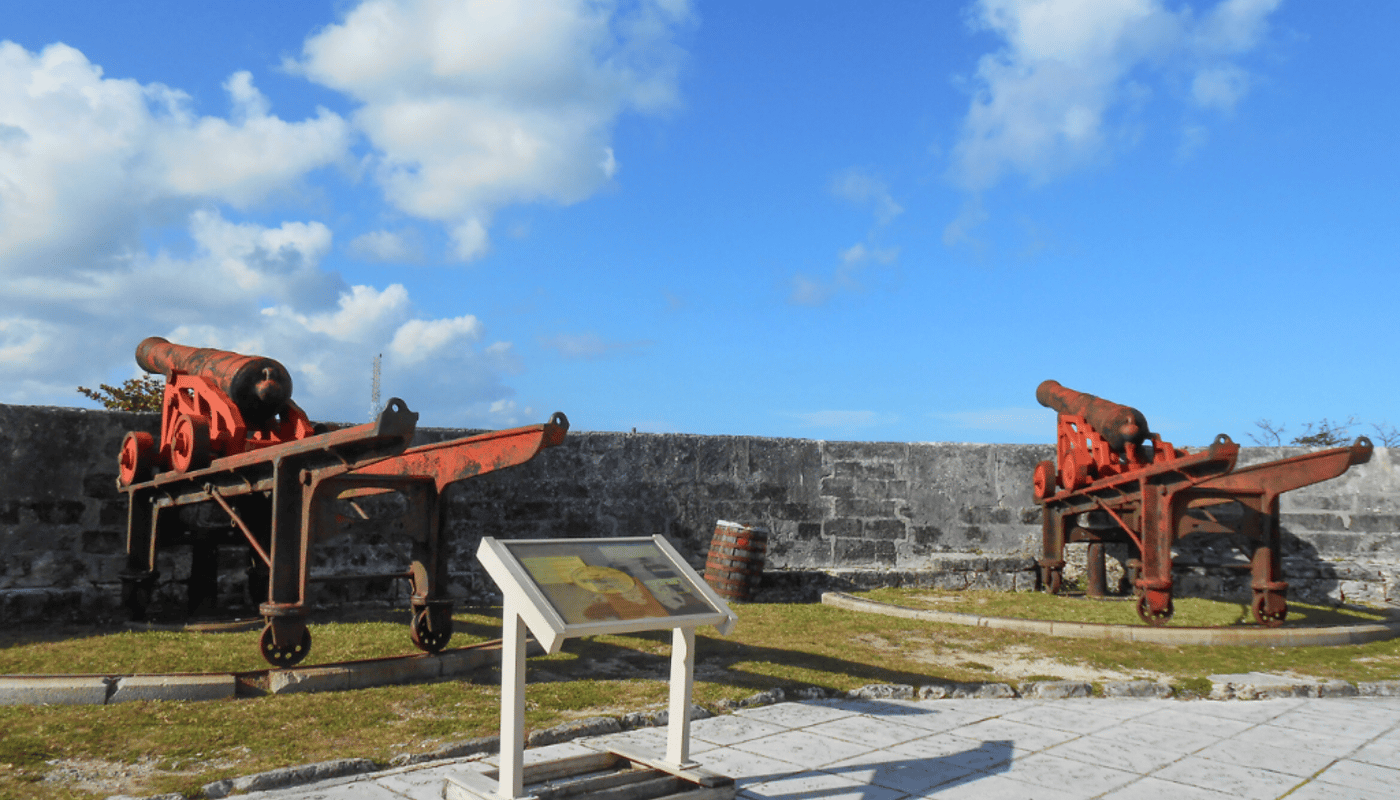Discovering Bahamas History: Key Events That Shaped the Islands
The Bahamas isn’t just pretty beaches and pastel resorts. This archipelago has a complex, often tumultuous past that has shaped everything from the islands' layout to the language spoken here today.
If you're visiting for the first time, it's worth knowing what came before the catamarans. This is a quick but in-depth look at the history of the Bahamas… and where you can see it for yourself.
1. The Lucayan Tainos – the first to call it home
Life before Europeans arrived
Long before Columbus claimed anything, the islands were home to the Lucayan Tainos, who came over from Hispaniola and Cuba sometime around the 9th century. By the late 1400s, more than 40,000 Lucayans were living across the Bahamas.
They fished, farmed cassava, paddled between islands in hand-carved canoes, and had their own complex belief systems.
Zemis—ancestral spirits—were central to their religion and daily rituals.
Pottery was painted with red ochre and carved with spiritual designs.
They traded woven baskets, food, and handmade shell tools throughout the region.
Homes were thatched and round, and villages were organized with intention.
It wasn’t just survival. It was community, structure, and spiritual meaning—until it was all upended.
2. The arrival that changed everything
Columbus landed in 1492
When Christopher Columbus stepped onto Bahamian sand in 1492 (probably on what’s now San Salvador Island), he renamed Guanahani and claimed it for Spain.
Spain didn’t stay, but they made sure the Lucayans didn’t either.
Thousands were taken from the Bahamas and forced into labor in Hispaniola.
Diseases spread fast, and by 1515, the Lucayan population had collapsed.
Within one generation, the islands were nearly empty.
This moment marks one of the most dramatic losses in the Bahamas' history.
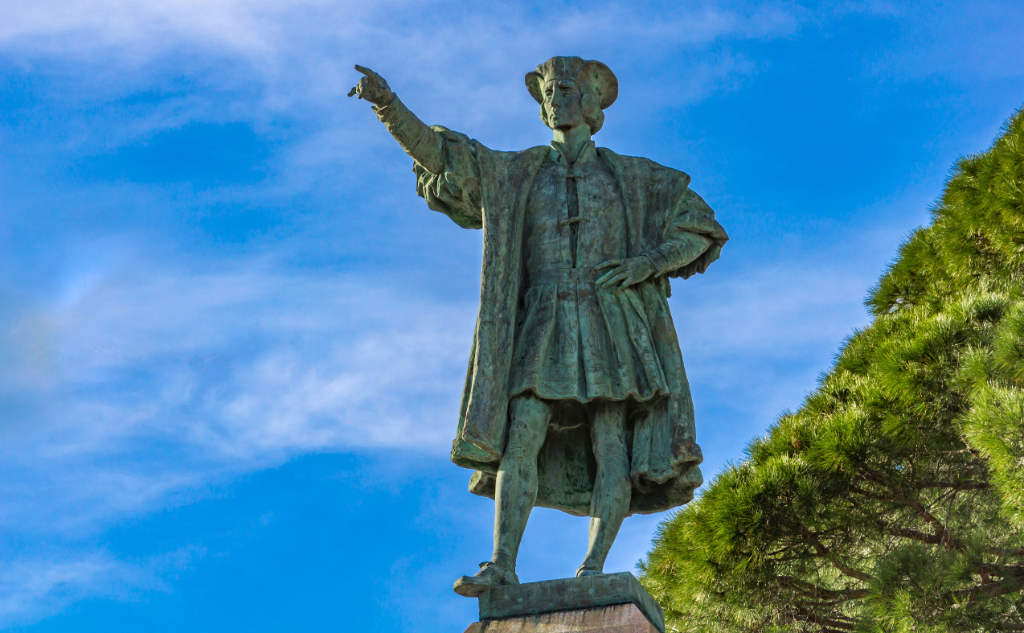
Spain pulls out, and the islands sit empty
Spain lost interest in the Bahamas quickly. With no gold or spice trade, there wasn’t much for them to exploit long-term. For about a hundred years, the islands were used for quick stops, slave raids, and little else.
No major Spanish cities or forts were ever built here.
Most maps didn’t even label all the islands.
The territory became a blank spot, which would later attract pirates and colonists.
This gap in control explains a lot about how the history of Nassau, Bahamas, took such a wild turn later on.
3. From British rule to pirate takeovers
By the mid-1600s, the British set their sights on the Bahamas—and more specifically, Nassau. The islands had bounced between failed settlements and foreign raids, but Britain saw long-term value. It wasn’t just about location. It was about control.
British claim and colonial foundations
How the British gained control of Nassau
The first lasting British presence came with the Eleutheran Adventurers, a group of religious dissidents from Bermuda who landed on Eleuthera in the 1640s. The name meant “freedom seekers,” but survival proved tough. Food was scarce, supplies ran low, and the shipwreck that brought them there didn’t exactly help.
Still, they held on. And by 1670, Britain officially claimed the entire Bahamas archipelago, including New Providence.
The British made Nassau the capital, and its natural harbor quickly turned it into a strategic and chaotic port in Atlantic trade and politics. That decision shaped the direction of the history of Nassau, the Bahamas, for centuries.
4. The Pirate Republic of Nassau
When pirates ran the capital
In the late 1600s and early 1700s, British control faltered. That left Nassau wide open, and pirates took full advantage.
With no real military or law enforcement on the islands, Nassau became a pirate stronghold, earning the title The Republic of Pirates. At one point, more than 1,000 pirates lived and operated here, making it the beating heart of the Atlantic’s black market.
Notorious pirates who ruled the seas
This part of pirate history wasn’t just drunken chaos. These were organized crews with terrifying reputations.
Blackbeard (Edward Teach): He ran his operations out of Nassau, terrorizing trade routes in the Atlantic with his 40-cannon ship and signature look.
Calico Jack Rackham: Credited with designing the skull-and-crossbones flag, he launched raids from the Bahamas and became a symbol of pirate rebellion.
Anne Bonny and Mary Read: Two of the few documented female pirates, both operated from Nassau and became legends for outsmarting—and out-fighting—men at sea.
But by 1718, the British Crown had had enough. They sent Woodes Rogers, a former privateer, to clean up. He became the first royal governor of the Bahamas, issuing pardons to those who cooperated and the gallows to those who didn’t.
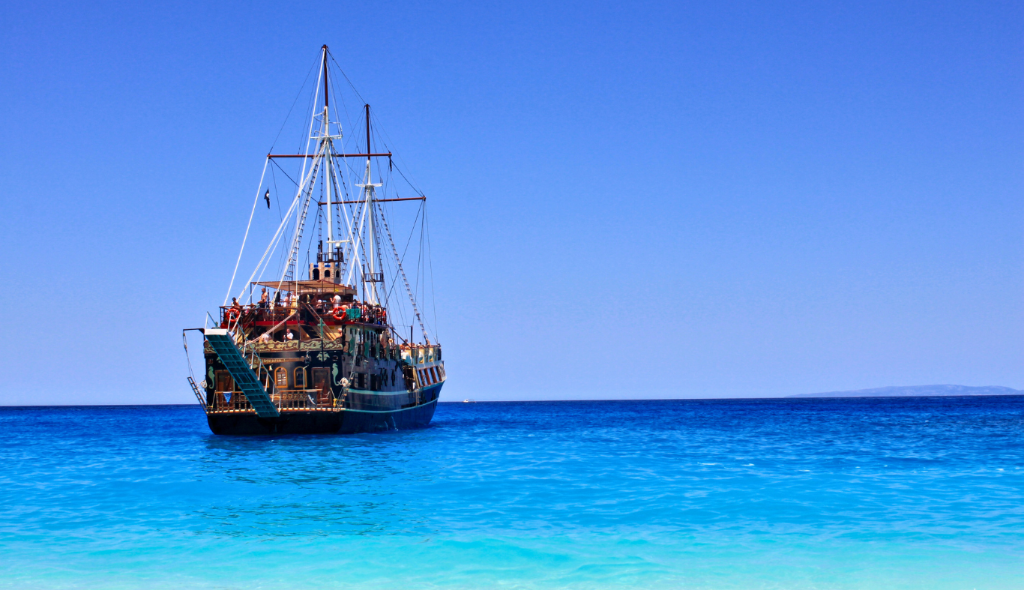
5. The American Revolution and its impact on the Bahamas
Loyalist migration and the shifting social order
When the American Revolution kicked off in 1775, not everyone wanted independence. Thousands of Loyalists (colonists loyal to Britain) fled the U.S. South and resettled in the Bahamas.
They didn’t come alone. Many brought enslaved Africans, wealth, and a plantation mindset, hoping to recreate the agricultural systems they lost.
What changed after the Loyalists arrived
The influx of Loyalists reshaped the social and economic makeup of the islands.
Many tried to grow cotton, but poor soil and hurricanes limited long-term success.
Settlements spread across Exuma, Eleuthera, and Abaco, with British-style estates and political influence.
Slavery remained legal until 1834, when the British Empire abolished it. Many formerly enslaved people went on to found villages that still exist today.
Their legacy is complex, but it’s foundational to the history of the Bahamas.
6. The Bahamian revolution (sort of)
Political awakening in the 20th century
While the Bahamas never had a full-blown rebellion like Haiti or Cuba, the 1900s brought a revolution of identity.
In Nassau, the Black majority began pushing back against the elite minority known as the Bay Street Boys, who had long controlled business and government.
By the 1950s, protests and calls for reform gave rise to a real political movement.
In 1953, the Progressive Liberal Party (PLP) was formed. It was the first major party to represent the interests of Black Bahamians.
The PLP fought for voting rights, fair employment, and a more inclusive government.
These efforts reshaped the history of Nassau, the Bahamas, laying the groundwork for independence.
The change wasn’t marked by bloodshed, but it was no less significant.
7. The final step – Independence in 1973
Sovereignty and national identity
After years of civil action and negotiation, the Bahamas officially gained independence from Britain on July 10, 1973. It became a sovereign nation within the Commonwealth, with Queen Elizabeth II remaining head of state.
Sir Lynden Pindling, leader of the PLP, became the first Prime Minister. He’s remembered as “The Father of the Nation” for guiding the Bahamas into self-rule.
The moment was peaceful, but deeply symbolic. For the first time, Bahamians had full authority over their own laws, identity, and direction.
Where to step into Bahamian history today
If you want to do more than read about the Bahamas' past—if you want to feel it—there are places across the islands where those stories come to life. Here's where to go if you're curious about the people, power struggles, and cultural shifts that shaped this place.
1. The Lucayan presence
Lucayan National Park (Grand Bahama): This is one of the few places where you can still trace the footsteps of the Bahamas’ first people. The park protects ancient cave systems and quiet beaches once used by the Lucayans. Interpretive signs along the trails explain how they lived, traveled, and buried their dead.
2. Colonial influence and British rule
Parliament Square (Nassau): These pink buildings might look cheerful, but they’re steeped in colonial power. Built in the early 1800s, they still house the Bahamian government.
Government House (Nassau): Perched on Mount Fitzwilliam, this has been the official residence of the Governor General since 1801. It’s not always open for tours, but you can walk the perimeter and take in the views.
Christ Church Cathedral (Nassau): Founded in 1670 and rebuilt several times since, it’s the oldest church in The Bahamas. Services are still held here weekly.
3. Pirate-era chaos
Sightseeing Pirate Jeep Tour: Embark on a pirate-themed jeep tour through Nassau led by Captain Whitebeard, exploring six historic landmarks tied to the island’s swashbuckling past. This fun, family-friendly experience dives into Nassau’s Golden Age of Piracy with epic tales, local lore, and plenty of pirate flair.
Pirates of Nassau Museum: This isn’t your average museum—it’s part walkthrough experience, part history lesson. You’ll find life-size ship replicas, recreated pirate taverns, and exhibits that explain how Nassau became a pirate capital.
Woodes Rogers Statue: Just outside the museum, this statue honors the man who brought order to the chaos. Rogers was the first Royal Governor and played a key role in ending the pirate republic.
Rum Runners Tour: Take a guided walking tour through downtown Nassau and explore 300 years of Bahamian rum history through tastings, cocktails, and local stories. Perfect for foodies and history lovers curious about what the pirates drank.
Fort Charlotte (Nassau): This hilltop fort was built to defend against pirate attacks. Today, you can explore its underground tunnels, cannons, and panoramic harbor views.
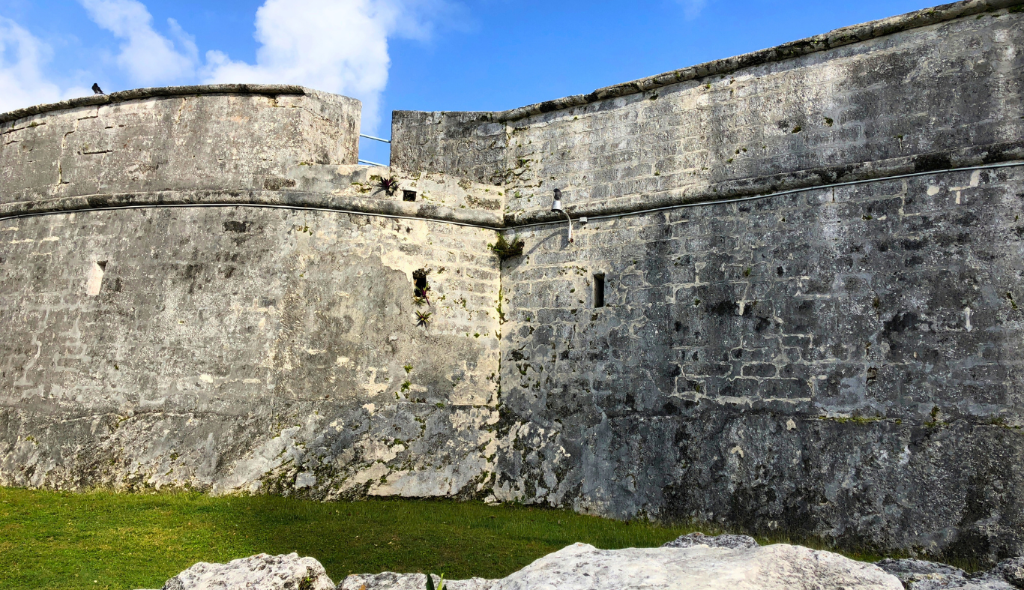
4. Loyalist migration and slavery
Heritage Museum of The Bahamas (Nassau): Located in the Mountbatten House, this museum has a thoughtful collection covering Loyalist arrivals, plantation life, and slavery. Small but packed with context.
Clifton Heritage National Park (New Providence): For Loyalist estate ruins and Lucayan archaeology in one place, head to Clifton Heritage National Park, highlighted in our guide to Nassau’s top landmarks
Fox Hill (Nassau): A neighborhood with deep roots. After slavery ended, many freed families settled here. Today, it’s still home to descendants and holds a major role in Emancipation Day celebrations each August.
5. The road to independence
Pompey Museum (Nassau): Housed in the historic Vendue House downtown, this museum is dedicated to slavery, resistance, and the long path to freedom. It’s named after Pompey, an enslaved man who led a rebellion in Exuma in 1830.
Rawson Square (Nassau): This is where the country’s independence was declared in 1973. Statues here pay tribute to key political figures like Sir Milo Butler.
National Art Gallery of the Bahamas: This space focuses on modern Bahamian identity, especially through post-independence artwork. The gallery is housed in a beautifully restored colonial-era mansion.
Pompey Square (Nassau): More than a plaza, this space honors the same Pompey who led the Exuma uprising. Today, it hosts concerts, cultural events, and everyday gatherings.
You can’t understand the Bahamas' history without stepping into it. From carved staircases and colonial forts to cultural street festivals and national heroes, the past is stitched into nearly every inch of the islands.
Culture check – History lives in daily life
Bahamian culture and heritage
You don’t need a museum pass to feel connected to the Bahamas' cultural heritage. The everyday rhythm of life, like what people eat, how they speak, and what they celebrate, carries centuries of influence.
Bahamian culture is a mix of West African roots, British rule, and Caribbean expression.
Architecture: Historic Nassau is packed with colonial-era homes, painted in soft pastels and lined with iron balconies.
Language: English is the official language, but it's shaped by Bahamian Creole, which is fast, rich, and full of flavor.
Food: Staples like conch fritters, steamed rock lobster, and guava duff aren’t just local, they're generational.
Music: Junkanoo, the national street festival, blends African drums, brass instruments, and costumes in a high-energy parade rooted in both slavery and celebration.
The past isn’t frozen in this country because it moves, tastes, and sings right alongside you.
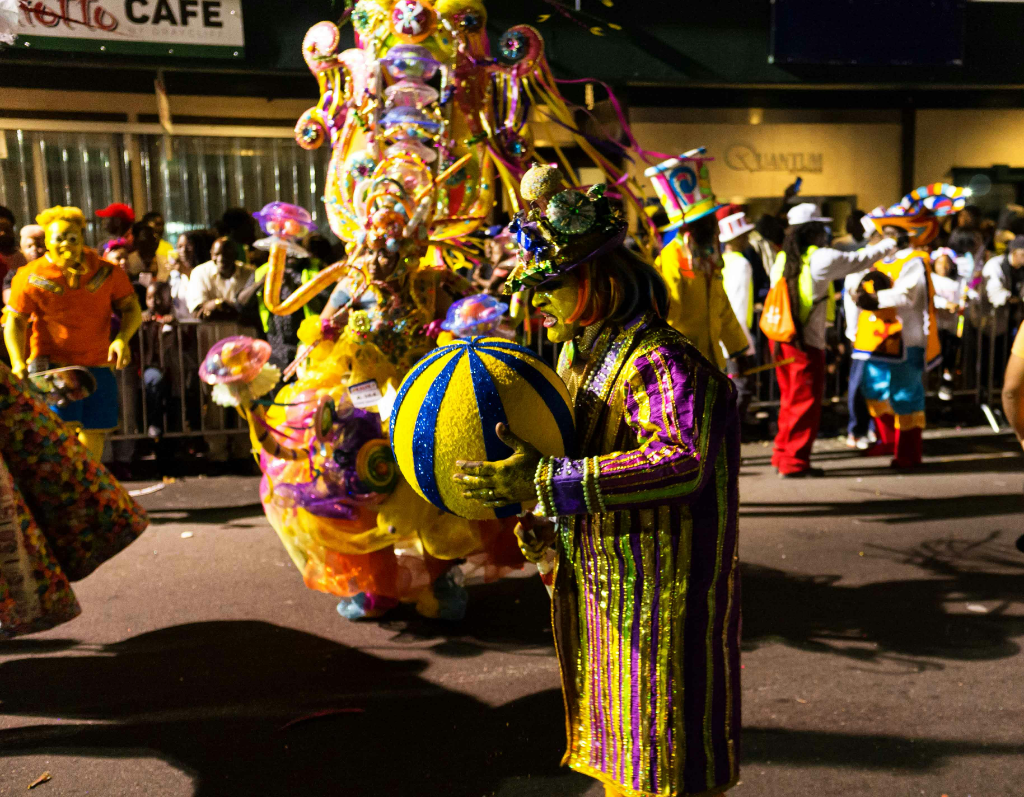
Festivals and celebrations
In the Bahamas, culture isn’t something kept behind glass—it’s loud, colorful, and happening right now.
Emancipation Day (first Monday in August): A national holiday honoring the end of slavery, celebrated with beach cookouts, parades, and church services.
Bahamas Independence Day (July 10): Street parades, national flag-raising ceremonies, and music festivals take over Nassau and the Family Islands.
Fox Hill Day (Tuesday after Emancipation Day): Celebrated in the historic Fox Hill community with church services, traditional food, and storytelling.
These events aren’t just parties, they’re living history, a chance to connect with the same stories you’ve read about in textbooks.
Modern Nassau: history meets luxury
The modern-day Bahamas, especially Nassau, is the perfect mash-up of past and present. You can sip a piña colada in a beachfront infinity pool, then walk ten minutes and be standing inside a 200-year-old fort or public square tied to slavery, pirates, and political upheaval.
Bahamian identity today
What makes the history of the Bahamas so compelling is that it’s still unfolding. You’ll find colonial relics next to modern monuments, and the echoes of the Lucayan people in modern-day rituals, place names, and cultural pride.
Bahamians today are storytellers, musicians, artists, and chefs who’ve taken centuries of influence and crafted something entirely their own. The national motto says it all:
“Forward, Upward, Onward, Together.”
It’s not just poetic—it’s a roadmap that the Bahamas continues to follow with every passing generation.
Final travel tips for history lovers
Want to design a history-forward Bahamas trip? Here’s a cheat sheet:
Base yourself in Nassau for colonial landmarks, museums, and Junkanoo access.
Island-hop to San Salvador for Columbus landing sites and Loyalist ruins.
Explore Eleuthera and Exuma for pre-colonial caves, Lucayan artifacts, and post-slavery settlements.
Time your trip for July or early August to catch Independence Day, Emancipation Day, and Fox Hill Day celebrations.
Whether you’re strolling cobblestone streets, standing in a pirate’s old fort, or dancing through Junkanoo at midnight, you’re not just learning Bahamas history, you’re living it.
Where the past still walks beside you
The Bahamas isn’t just a beach destination; it’s a place where pirate ships once docked, where queens ruled from across the ocean, and where revolution brewed in church halls and quiet streets. That layered past is everywhere if you know where to look. In a crumbling fort wall. In a Junkanoo drumbeat. In a grandmother’s recipe passed down from enslaved ancestors.
Read more about unforgettable reasons to go to the Bahamas this summer, and our fun facts about the Bahamas, and go ahead, float in turquoise water, sip the rum punch, chase the sunsets. But make time to step into the stories, too. Walk the Queen’s Staircase. Stand where Columbus came ashore. Get lost in the rhythm of Junkanoo.
Because in the Bahamas, history isn’t behind you, it’s all around you.

